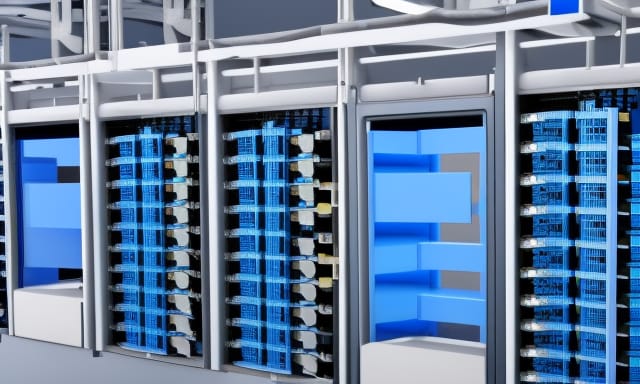Welcome to our comprehensive introduction to Kubernetes! If you’re new to the world of containers and orchestration, you’ve come to the right place. In this article, we’ll cover the basics of Kubernetes, its main components, and how it can help you manage and scale your containerized applications. Let’s dive in!
What is Kubernetes?
Kubernetes, often abbreviated as K8s, is an open-source container orchestration platform that automates the deployment, scaling, and management of containerized applications. Developed by Google and now maintained by the Cloud Native Computing Foundation (CNCF), Kubernetes has become the industry standard for container orchestration, providing a reliable and flexible solution for managing complex applications at scale.
Containers offer numerous benefits, such as improved resource utilization, faster deployments, and greater application portability. However, managing containers at scale can be challenging. This is where Kubernetes comes in. It helps you manage containerized applications across a cluster of machines, ensuring they are running optimally and resiliently. With Kubernetes, you can easily deploy, scale, and update your applications without worrying about the underlying infrastructure.
Kubernetes Architecture and Components
The architecture of a Kubernetes cluster consists of two main components: the control plane and the worker nodes. The control plane is responsible for managing the overall state of the cluster, while the worker nodes run the actual containerized applications. Let’s take a closer look at these components:
- Control Plane: The control plane is a set of components that manage the overall state of the cluster. It includes the following:
- API Server: The API server exposes the Kubernetes API and serves as the front-end for the control plane. It processes RESTful requests from users, tools, and other components, and updates the corresponding objects in the cluster.
- etcd: etcd is a distributed key-value store that stores the configuration data of the cluster, representing the overall state of the system.
- Controller Manager: The controller manager is a daemon that runs a set of controllers responsible for managing the cluster’s state, such as ensuring the desired number of replicas for a deployment is running.
- Scheduler: The scheduler assigns newly created pods to nodes based on resource availability and other constraints.
- Worker Nodes: Worker nodes are the machines (physical or virtual) that run your containerized applications. Each node runs the following components:
- Container Runtime: The container runtime, such as Docker or containerd, is responsible for running containers on the node.
- kubelet: The kubelet is an agent that ensures containers are running in a pod as expected, based on the pod specifications received from the API server.
- kube-proxy: kube-proxy is a network proxy that maintains network rules on nodes and enables service abstraction by managing IP addresses and load balancing.
Key Kubernetes Concepts
Before you start working with Kubernetes, it’s essential to understand some key concepts:
- Pods: A pod is the smallest and simplest unit in Kubernetes. It represents a single instance of a running application and can contain one or more containers. Containers within a pod share the same network namespace, which means they can communicate with each other using
localhost. - Services: A service is a stable network endpoint that provides load balancing and service discovery for pods. It allows you to expose your application to the outside world or within the cluster, regardless of the individual pod IPs.
- Deployments: A deployment is a higher-level abstraction that manages the desired state of your application, such as the number of replicas, the container image, and update strategy. Deployments ensure that the desired number of pods are running at all times, automatically replacing failed or terminated pods.
- ConfigMaps and Secrets: ConfigMaps and Secrets are used to decouple configuration data and sensitive information from container images, making it easier to update and manage your applications without rebuilding the images.
- Ingress: Ingress is an API object that manages external access to services within a cluster, typically through HTTP or HTTPS routes. It provides load balancing, SSL termination, and name-based virtual hosting.
Now that you have a basic understanding of Kubernetes architecture and key concepts, you’re ready to start exploring the platform in more depth. Visit our Kubernetes category on Codabase.io to discover more tutorials, tips, and best practices for working with Kubernetes.
Getting Started with Kubernetes
To get started with Kubernetes, you can set up a local development environment using tools like Minikube or Kubernetes in Docker (KinD). These tools allow you to create a single-node Kubernetes cluster on your local machine, perfect for learning and experimentation.
For example, to create a local Kubernetes cluster with Minikube, first install Minikube and start a cluster with the following command:
minikube startOnce your cluster is up and running, you can use the Kubernetes command-line tool, kubectl, to interact with the cluster and deploy your applications. Here’s a simple example of how to deploy a containerized application using a YAML file:
apiVersion: apps/v1
kind: Deployment
metadata:
name: my-deployment
spec:
replicas: 2
selector:
matchLabels:
app: my-app
template:
metadata:
labels:
app: my-app
spec:
containers:
- name: my-container
image: my-image:1.0
ports:
- containerPort: 80
Save the YAML file as my-deployment.yaml and deploy it to your Kubernetes cluster using the following command:
kubectl apply -f my-deployment.yamlThat’s it! You’ve now deployed your first application on Kubernetes. As you explore Kubernetes further, you’ll discover a wide range of features and capabilities that make managing containerized applications at scale more accessible and more efficient.
Conclusion
In this article, we’ve provided a comprehensive introduction to Kubernetes, covering its architecture, key components, and essential concepts. By understanding these basics, you’ll be better equipped to manage and scale your containerized applications using Kubernetes.
Be sure to explore our Kubernetes category on Codabase.io for more in-depth tutorials and best practices. And if you haven’t already, sign up for our newsletter to stay updated on the latest Kubernetes tips, tricks, and insights:







